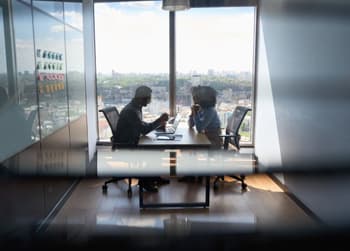Your online content forms part of your brand. Understandably, you would want to protect your brand as much as possible. However, the level of protection you can obtain against someone reusing or copying your content altogether largely depends on what sort of content you have produced. This article runs through various mechanisms you can use to prevent other parties from ripping off your content.
Does Copyright Law Protect Online Content?
Copyright law in Australia is an automatic right that arises as soon as you create copyrighted material. Copyright material can include:
- illustrations;
- books;
- tutorials;
- software code;
- art; and
- music.
The fact that copyright is an automatic right is helpful for many content creators. However, as the creator of content, you must enforce your rights in the instance of content theft. There are no copyright police who scan the internet to determine whether someone has infringed on your copyright. Rather, it is your responsibility to enforce your legal rights to your intellectual property if content theft takes place.
The points below will outline a few practical and legal measures to prevent people from using your original content.
Practical Measures to Protect Online Content
You should take advantage of any technology available to prevent other parties from using your original content through digital means. This means you should:
- create your own distinctive writing style, meaning the more you write, the more it will be evident that it is your writing;
- sign off as the author on everything you write;
- use plugins to protect others from saving photos, highlighting text, downloading music and hotlinking, which is the practice of sharing your information on their website;
- have a copyright notice on your website, which puts visitors on notice that you own the copyright for the website content included on your page;
- use watermarks on any images you post, which protects others from re-using them as their own;
- create Google Alerts for key phrases that are distinct to your brand so that Google will alert you when it finds the phrase on another website; and
- conduct a reverse Google image search regularly to see if someone has reused your image without your permission.
These measures will help to prevent others from having full access to your work. If you can release only increments of your work so various parts are not accessible, this may also allow for greater prevention.
As noted above, you must actively attempt to enforce your legal rights relating to the copyright of your website content. If it were to arise that you found someone using your copyright material and ownership of that material was questioned, it is helpful to have an adequate record of the process you undertook when you were creating the content. This means having the appropriate notes and evidentiary materials available to ensure you can prove that you were, in fact, the content creator.
Continue reading this article below the formWhat Should I Do If Someone Has Stolen My Online Content?
The first step could be to alert them of the infringement, as they may not be aware. The owner of the website may have employed a third party to write content and is not aware it is stolen.
Most platforms have a function to request the removal of information. If you do not get a response when contacting the owner of the website, you can report stolen information to Google, and they will potentially remove it from appearing in search results.
Sometimes, the owner of a website will not take notice of your requests, and you may have to seek legal advice.
Legal Measures
The legal measures for protecting your content can come in two primary forms. As mentioned above, the first is having the relevant disclaimers in place. These disclaimers outline that you are the owner of the content and, if required, details of how the use of the content is restricted.
The second is having the relevant legal agreements in place, such as a Website Terms of Use. The legal agreement may be between you and your employer or you and the web-hosting platform that you use to post your content. The legal agreement should state that you remain the sole copyright owner of the content. This will help to prevent others from claiming ownership of your content.
Third-Party Content
It is quite common for businesses to employ a third party to write content for their website. It is essential in the contractual agreement with the third party that they assign or provide an unrestricted licence to the content they have created for you.
Further, you should also check all third-party content for plagiarism. This can quickly be done through an online plagiarism checker. By checking for plagiarism, you are ensuring that you are not infringing someone else’s copyright.

This fact sheet outlines your rights and obligations as an AI artist regarding intellectual property and copyright.
Key Takeaways
Copyright law in Australia is an automatic right that arises as soon as you create copyrighted material. This means that copyright law likely protects your online content. However, as the copyright owner, you are responsible for enforcing your rights. The above measures are simple, practical steps to help you keep your content secure in the digital space. As access to online content increases, it is important that you take practical steps to protect your online content. By ensuring that external third parties are aware that you are the owner of the content, you will help to prevent misuse or infringement.
If you need help with copyright protection, our experienced intellectual property lawyers can assist as part of our LegalVision membership. For a low monthly fee, you will have unlimited access to lawyers to answer your questions and draft and review your documents. Call us today on 1300 544 755 or visit our membership page.
We appreciate your feedback – your submission has been successfully received.











